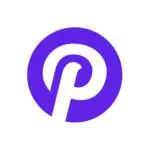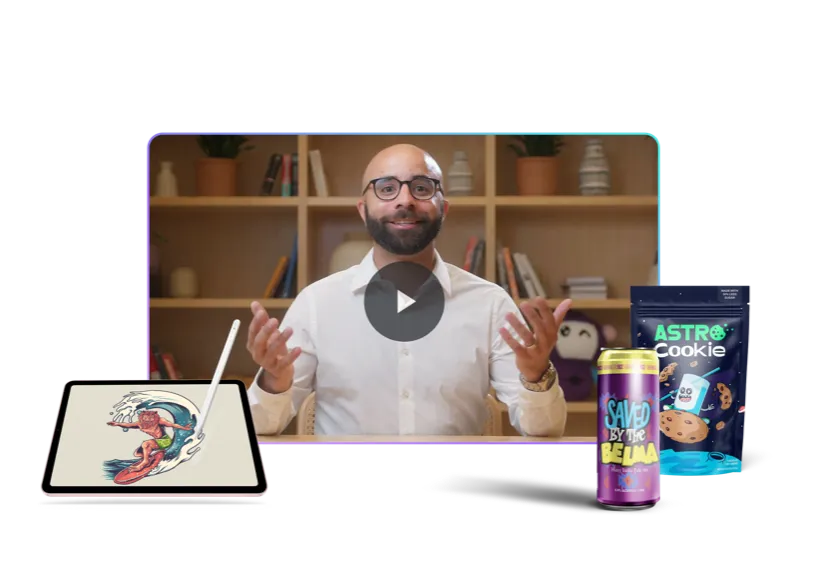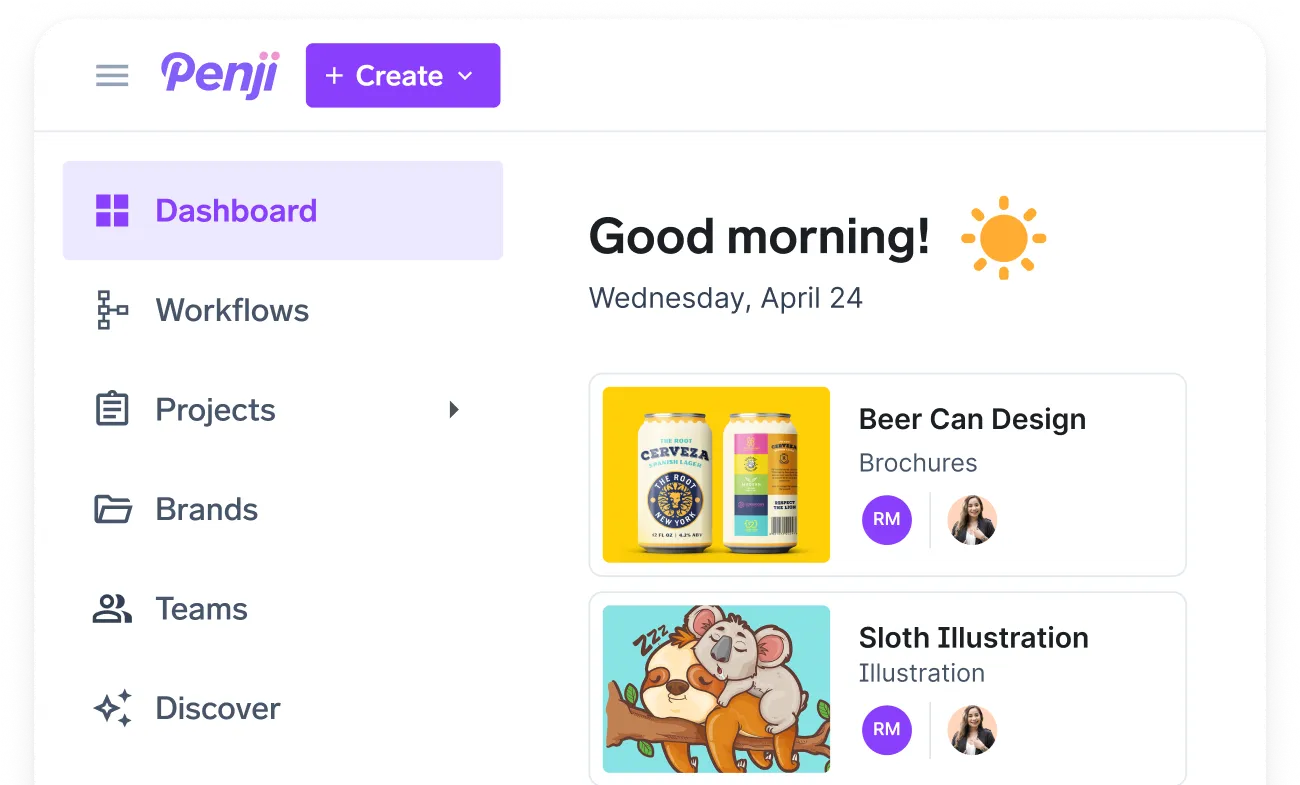![[Fully Managed] Brenton Thomas of Twibi Digital Marketing Agency Ep. 134](https://penji.co/wp-content/uploads/2025/07/BLOG-IMAGE-Brenton-Thomas.jpg)
Phil Wiseman Podcast Transcript
Platform-Specific Content Creation
SD: Okay, switching gears. So when creating content—and again, I don’t know how involved you are in this now—but if you were still doing it or if you’re not doing it now, how would you go about, in a general sense, making an ad campaign for two different short-form social media apps? So like, say you’re doing Instagram Reels and TikTok, would you think that you would use the same ad because they’re both short-form? Or do you think that you’d vary it based off of the social media itself?
PW: Definitely trying to switch it up per platform. We’ve actually haven’t focused too much on TikTok. We’ve kind of more so stayed on Facebook and Instagram, a lot of Google placements, some of the YouTube aspects as well. But it still rings true with the variations of it and thinking on that on a per-platform basis. There are some similarities, of course, but the more optimized you are per platform, the better it’ll be.
I think that’s one of the main decisions why we decided to continue to focus on certain platforms and not on others—because we didn’t want to stretch ourselves too thin. Everybody’s got different strategies to it. My philosophy is that you can make Instagram your multimillion-dollar platform. You can make Facebook your multimillion-dollar platform. As long as your clients are there and you’re able to engage with them.
Of course, we need to have a holistic approach and also pull in email, text, and optimize the conversion rate for these landing pages. But to go back to your point, whenever we do develop per platform, we are thinking of different dimensions, how we’re restructuring it, and also the length as well.
SD: That makes sense.
PW: Yeah, that’s pretty much how we think about it. And then also, whenever we’re coming up with the creative process and doing a lot of pre-production—which is super important with anybody who does video—they know how important pre-production is. It takes more time upfront, but the editing process and post-production is going to be much easier when you have a very clear strategy in place.
During that pre-production stage, we’ll use Facebook Ads Library. We’ve used different tools just to do a lot of market research, see what types of ads are running, go to competitors, see industry standards. Facebook Ads Library is great because you can also see how long an ad has been running. So if it’s a larger company, we hope that their paid media manager is making that decision to continue to run it. At least that’s the thought and the hope—that it’s showing it has a successful type of template or replicable process.
So we use a lot of that different stuff as well. We go per platform and do as much research and pull as much inspiration as we can to help that process of how we want to structure it.
Managing Client Expectations
SD: Is there times where a client believes that they’ll have success on a certain social media app, but that’s not really the case? Like maybe the clientele isn’t based on that app or the age range doesn’t fit? Does that happen?
PW: Yeah, definitely. I think that’s a big part of expectation setting when you’re working with a client or company. Oftentimes, you’re working directly with the CEO or the visionary of the company, especially in smaller companies—and smaller can even be a few million in revenue. And they have bold, wild ideas. I love the energy. But at the same time, they might just see a trend.
This is part of the reason why they’re visionaries—they get excited, they have a lot of inspiration and motivation. They’ll say, “We need to be on TikTok.” Or, “Instagram’s got Threads now, we need to be doing that.” And it’s about setting those expectations: let’s pull it back a little bit and make sure we find the winner for you and let the numbers speak for themselves.
So that’s one approach we take often—helping clients rethink what’s possible, committing to a plan, and letting the numbers guide us. Try to optimize rather than restart from scratch all the time. A lot of these platforms can be successful, but sometimes Facebook will perform better than Instagram. Google Search might be better for some products than Meta.
All in all, we try to limit the starting scope. Maybe it’s just Meta, or Meta and Google. But not pulling in LinkedIn, TikTok, and every new platform under the sun just because it’s shiny and exciting. We need to remind them: we’re here to make you money profitably. That’s the goal.
SD: Yeah, of course. I think it’s nice to be transparent about that as well. Because a lot of clients will probably come to you wanting a certain thing and you can try, but that kind of sets you both up for failure if it’s not something that’s right for them. It’s much easier to have that conversation early on.
PW: Mm-hmm. It’s hard not to people please and just go with whatever they want. But it’s our job to say, whether you like it or not, here’s my professional opinion. And this is where I think we should move forward. That builds long-term relationships in business, which is what you truly want. Sacrificing a couple smaller gigs that don’t align is going to save you a lot of headache and stress.
It’s more about going with clients you can truly serve and align with. It’s hard to say no sometimes, but in the long term, we’ve never regretted not taking on something that didn’t feel like a good fit. Because we knew we weren’t able to match up and it would just push everyone back.
SD: Yeah. And I think if they don’t appreciate your professional opinion or honesty, they can just not use your services. It’s good to find that out in the beginning rather than halfway through when they just think you’re doing a bad job. A lot of people respect that.
PW: Yeah. And if people don’t respect that, it just shows—hey, we’re not a fit for everybody. And that’s totally fine. It’s hard to think like that when you’re starting a business, but it makes things better. You’ll get a lot more respect when you’re able to set boundaries and expectations.
SD: Exactly. And I think it sets you up for success with your relationship with them. Because referrals are very important for this business, and having that good relationship is valuable. You can statistically do a successful job, but if they didn’t like working with you, you’re probably not getting a referral.
So it’s nice to have a good relationship from the beginning and know that’s what it’s going to be. You find that out very quickly by being honest and not giving them a pipe dream. It’s good to believe in the people coming to you, but there are realistic expectations. That’s important.
Rapid-Fire and Wrap-Up
SD: So it’s game time. I’ve decided. Okay, I’m going to ask you something that’s not super crazy and absurd first. If you’re doing outreach, what do you think is the best way of doing it in a general sense? Because I know there are so many things that you can do outreach for. LinkedIn or email?
PW: I would say email. We’ve had some success with email. I haven’t went too deep down the LinkedIn rabbit hole, but I think it’s a bit easier to stand out on email where LinkedIn feels very saturated with it. And it’ll take a bit of quantity on both sides if you’re doing it at scale, but I think that you’ll probably have better success when it comes to email.
SD: I kind of agree. I’m not even a big guy on LinkedIn and I still get spam. That’s crazy. I can’t imagine how much other people are getting spam. I don’t love LinkedIn. A professional social media gives me bad juju, but I think it’s obviously helpful. Especially for this industry—agencies are often very heavily involved in a social media presence on LinkedIn specifically.
PW: Yeah. And if you’re still able to make it work—if you thought it out and built a message to be very unique and actually care. But it’s still hard to stand out because of the amount of spam that’s being pushed through. Which is a rule of thumb for everything: if you’re going to do it, make sure you’re actually engaging. Having a quality type of outreach is going to serve you best long term. Same is true with email and LinkedIn. But LinkedIn is an easy one for people to put a filter up and instantly not look at messages whenever they’re attached to these.
Pricing Confidence and Closing Thoughts
PW: Exactly. And if they don’t value you enough to pay more, they’re probably going to leave for someone cheaper anyway.
SD: I love that mentality. And I think more people should adopt it. Of course, when you’re starting out, you don’t always have the luxury. But the goal is to get to a place where you do.
PW: Right. I used to work with a lot of startups, showing them how to use Google Analytics, Search Console, all that. They’d land a big opportunity with a name-brand player and immediately talk about offering a discount. I’d say, “Oh no, no. You need to raise your prices.”
Their expectations are higher. It’s more work. One woman I worked with—brilliant chemical engineer—was severely underselling herself. I finally convinced her to double her prices. When she did, her clients said, “We were wondering what took you so long.” Because she was good.
SD: That’s amazing. And it’s true—sometimes underselling yourself backfires. Not only are you losing money, but people might see your low price and assume you’re not good. They think, “Why is this so cheap?”
PW: Exactly. In my case, my standard fees are still less than what the big-box firms charge. But there’s a reason. I’ve been using AI, machine learning, language models for a long time. I’ve built tools to get results fast. So I don’t need hours and hours.
The time I save on data analysis, I put into thinking. That’s where the real value is—strategizing based on the data. I know what I want to make per hour. That’s how I price. I’m not going to charge more just because I know someone else does.
SD: That’s respectable. You’re not taking advantage of clients just because others do. You know your worth and you price accordingly. That’s rare—and refreshing.
PW: There’s an old expression in sales: “Pigs get fat, hogs get slaughtered.”
SD: I love that. I’m definitely going to use that one. My boyfriend’s from upstate Pennsylvania and always says the weirdest things. I’m going to tell him I grew up with that one.
Final Thoughts and Farewell
SD: Well, this is all the time we have today, which is very unfortunate. We didn’t get to the game, but that’s okay because we had such a great conversation.
I really appreciate you coming on with me today, Phil. I learned a lot—and that’s always my number one goal. But it was also just a fun time, so thank you.
PW: It’s been my pleasure. I’m so happy you invited me.
SD: Thank you so much. And everyone who’s listening or watching, don’t forget to like and subscribe to see more stories like this. I appreciate you coming on, Phil. And thank you again.
PW: Thank you.
https://www.linkedin.com/in/brentonthomas









